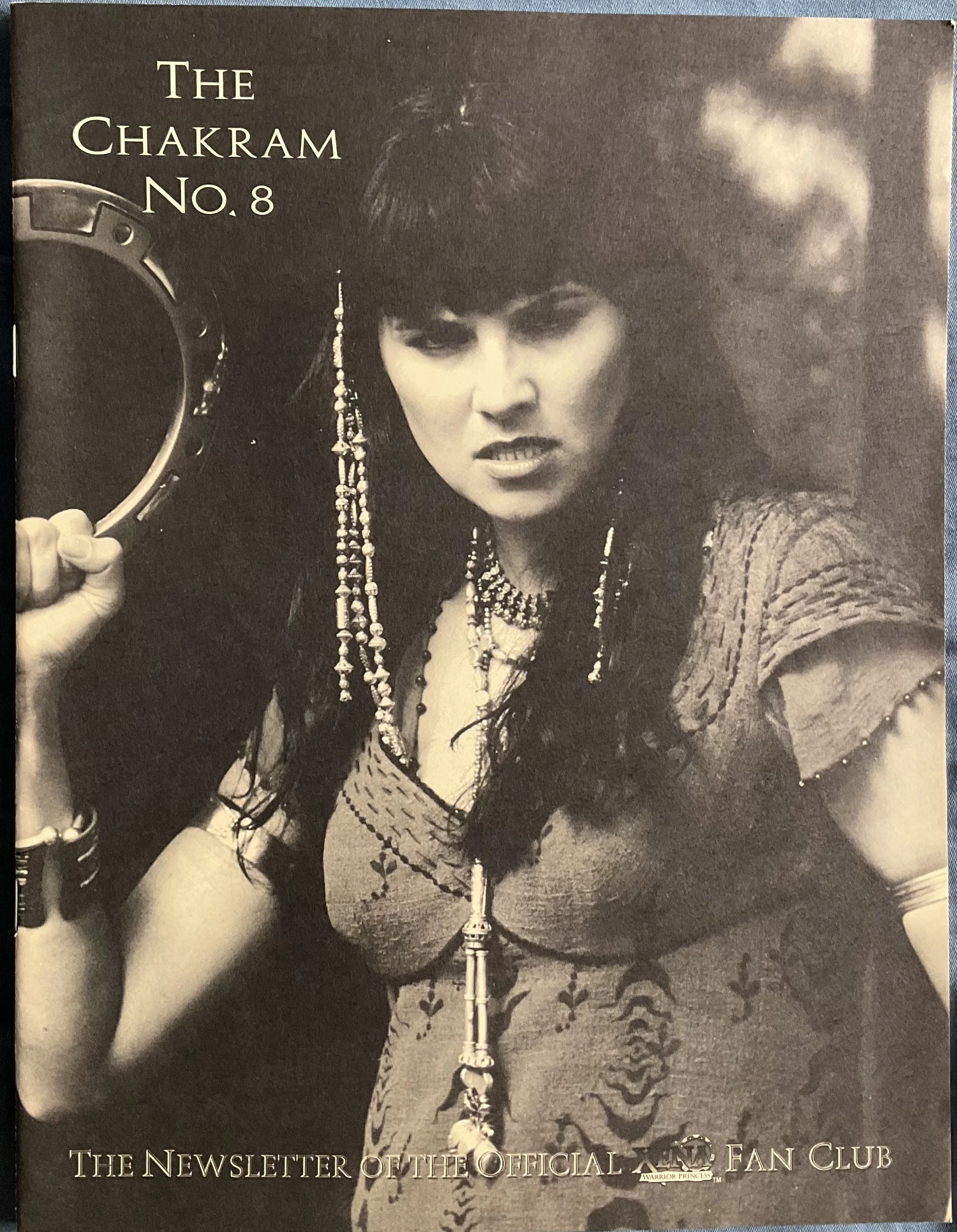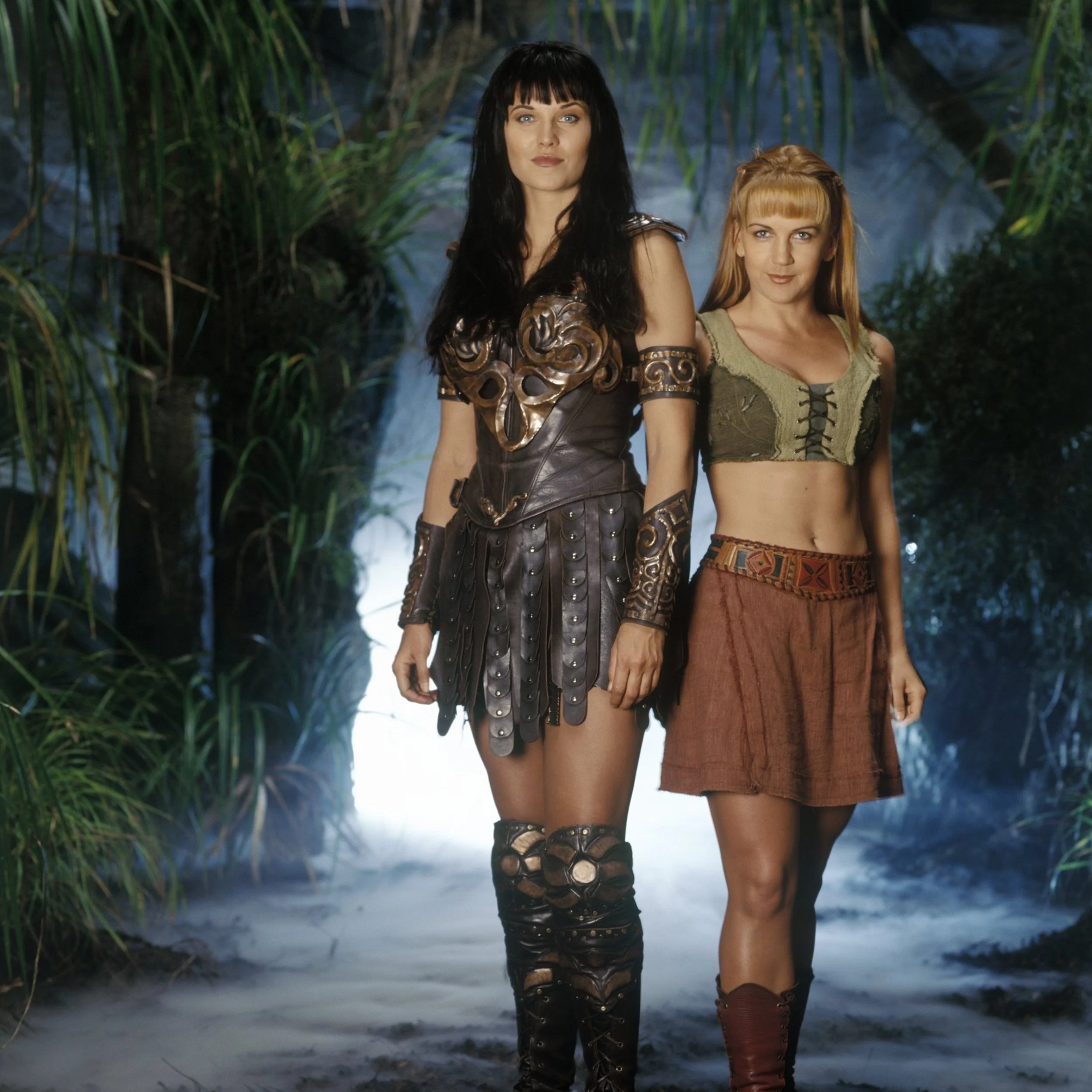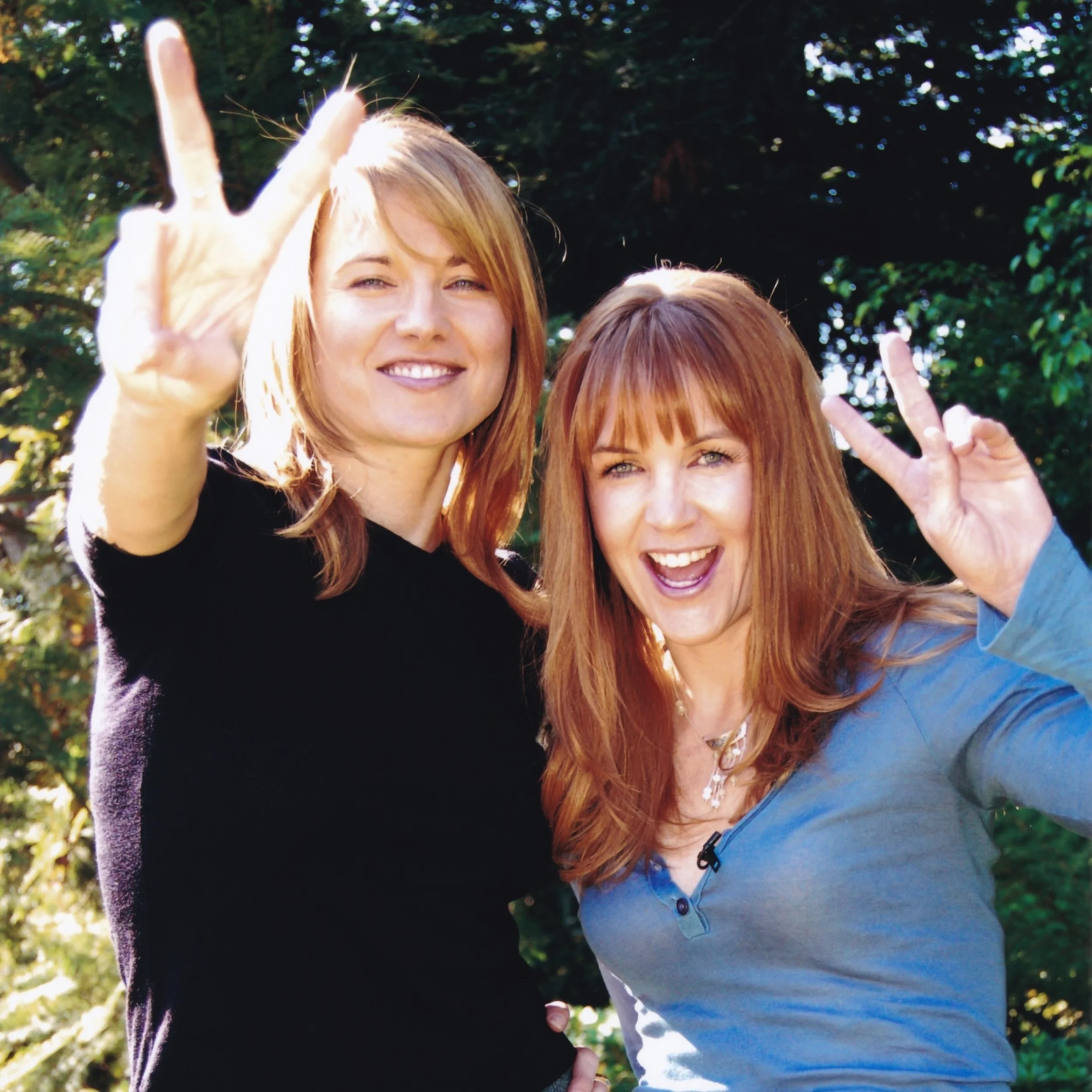Robert Gillies
Production Designer
The Chakram Newsletter: Issue 08
SD: The fans are certain you did some filming in India. But it was all really shot in Rob Gillies’ backyard. (laughs)
Rob: (laughs) We shot it all here.
SD: So when you found out you were going to India.
Rob: Like a sucker, I thought we were really going to India. (laughs) But I never got to leave the office. Typical. But I never got to leave the office. Typical. But there’s some of the Indian stuff that we’ve stuck on the wall. (he points out props to me) We had far more of it. We just stuck those up to give us a little bit of a feel to how we wanted to do it.
SD: Is that one of the fun things about this show? “Oh boy, we’re off to another country.”
Rob: Oh yeah! I like doing that. That’s what’s great about doing the shows.
SD: What’s the first thing you had to do? Eric Gruendemann said something about spending three months building a village?
Rob: Yes. We built a sort of an Indian main street.
SD: The marketplace?
Rob: Yeah. To do the three shows. We changed them around, but that was our basic Indian set.
SD: That will continue to stand?
Rob: Yes. It enters the generic world that the characters wander through.
SD: It’s already been used as something else, hasn’t it?
Rob: It’s our revisionist Greek world. We change it to accommodate whatever we’re trying to do.
SD: In “The Debt” - the chakram doorway in Lao Ma’s house. That caught everyone’s attention. (laughs)
Rob: (twinkle in eye) Ah-ha! The chakram doorway.
SD: R.J. said he didn’t write it and Rob said he didn’t put it in.
Rob: (laughs) Well, we thought we’d stick it in anyway.
SD: When I asked R.J. about it, he dived for the tape to take a look. (laughs)
Rob: Did he?!
SD: He hadn’t noticed it yet.
Rob: That’s good!
SD: Rob said things like that get thrown in by anyone who thinks of it and then down the road when they’re trying to think where the chakram came from - cause we still don’t know -
Rob: No, that’s right. And how did it wind up being a doorway? And was it a doorway before it was a chakram? (chuckles)
SD: Fascinating. (laughs) You did some building for the India episodes, did you do any for “The Debt”?
Rob: We built some quasi-Mongolian-looking sets for that. And some Chinese inspired interiors. But they were all interior sets. For the exteriors, the big thing was we went to the volcanic plateau which is down around Lake Taupo and the mountains which was that windswept, bleak-looking place.
SD: Where the battle between the armies took place?
Rob: That’s where our wide, establishing work was done. And then we matched a lot of it up here. There was a battle down there and the yurts. We did as much there as we could. And we CGI’s the Great Wall of China which wound up looking more like a snake. (laughs)
SD: I thought you’d used actual stock footage of the Wall itself.
Rob: We don’t use much stock footage from other sources for various reasons.
SD: Budgetary reasons?
Rob: Mostly because it’s not quite right. We could never match it. Sometimes they say in the script, “daylight stock footage.” And they might send the stock footage they have in mind which might be from a 50’s sword and sand movie shot in Palestine which we can’t match. We could use that but then you’d swing the camera around and we would be unable to match it for all the coverage.
SD: You need to find locations here that just look like another country?
Rob: Yeah.
SD: The interior decorations - is all that made from scratch?
Rob: Yes, we make it all.
SD: Aren’t the chakrams made in three different substances?
Rob: We make soft ones, the metal ones. We’ve also made them out of wood. We made a buzz saw one. Xena threw it at a tree and then did one quick insert shot of a chakram like a buzz saw. That was quite a long time ago.
SD: So things like pillows, draperies and such are all made from scratch?
Rob: Oh yes!
SD: How much notice do you get? (laughs)
Rob: About a week and a half. And all the people who manufacture the props add a lot when they make them. We try and have a pretty open creative atmosphere. It’s a given that if I quickly draw something that has to be like this (he draws on his blotter), they will add a lot of what they want to put in it. So if we say it’s Darphus’ dagger, they know he’s the personification of evil. They make sure that it’s a goodly evil dagger. Everyone is always adding to the creative input. Turns out some pretty cool looking props.
SD: Let’s say you’re going to do the interior of a yurt and it’s going to have pillows and scarves and hanging things. There’s so much detail in this show!
Rob: That’s what we try to do.
SD: That’s one of the reasons why the shows seem more like movies than television.
Rob: We try and get consistent little detail in front of the camera. That’s our objective - to give it that look.
SD: The scene from “The Debt” where Xena is in Ming T’ien’s castle and she’s going down the hallway with all the birdcages -
Rob: Yeah, the birdcages (laughs)
SD: Where did that idea come from?
Rob: We saw that in a movie and liked it. And that was a good place to use it.
SD: The pinwheels in “A Family Affair”?
Rob: Yeah, yeah! They were cool.
SD: I don’t know if it was written in the script that there would be pinwheels, but there are huge discussions going on among the fans about the symbolism of the pinwheels.
Rob: (laughs) I love it! We do this stuff and you wonder if anyone will pick up on it. So it’s nice when they do.
SD: Can you tell me about some things you’ve thrown in like the chakram doorway?
Rob: There are things, but it’s probably better not to tell you what they are. Because they should be discovered. That’s the way I look at it.
SD: With time and budget limitations, it’s a given that you’ve got to recycle props. One of the best instances of that for me was the monster head in Hercules’ “Doomsday” that then showed up as the top of the temple in “A Necessary Evil.”
Rob: Ahhhh!!! You’ve got my number, haven’t you! (laughs)
SD: I saw that and just laughed and thought, “Boy, are they getting their monies’ worth out of that prop!”
Rob: You know what, we are fully into recycling.
SD: Is that a New Zealand thing or a Hollywood budget thing?
Rob: It’s a bit of both, but it’s the natural way that we have learned to work. Because, down here, prior to doing these shows, when you’re doing a New Zealand film or TV, you don’t have much money to do it. So we’re always looking to re-use the materials in different ways to make them go the distance. It also saves the planet. You should use a hunk of polystyrene if you have to carve it up and make that inorganic waste. Then, arguably, you’ve got a duty to use it in as many ways as it can be used before you trash it. I quite like that.
SD: I was reading an interview you did where you mentioned that you go out to the spot where a structure is going to be built and you spray the ground?
Rob: Yeah. I’d go with Phil (Chitty) and spray the outline of where we want to put something.
SD: I didn't realize that's how it's usually done.
Rob: It's not, really. But because we go so fast, sometimes there's not enough time to do the plans. So we work live and direct
SD: So for a Hollywood movie, they'd have the time to make models?
Rob: Yeah. First you would make a model. Then you make a plan, print and circulate your plan, and budget it. Then someone like Phil would get the plan and work out how much it would cost. But we work a little more intuitively and faster. By the seat of our pants. If we worked for that length of time with all the paperwork, we wouldn't be ready in time
SD: I thought I saw paintings of Xena and Gabrielle in Caesar's tent in “Destiny.” And men in white wigs!
Rob: We like to layer the detail and have fun
SD: There is such a joyfully, wicked gleam in your eye! (laughs)
Rob (laughs) Mischievous. Keep the producers on their toes.
SD: Do you ever tell the producers you can't do something?
Rob: Oh, I usually say we can't do it. (laughs) No, I don't say we can't do it because there's always a way. It's a little like seeing a 40-foot wave coming because you think, “How are we going to do that?!” They shoot for the stars. They say, “They’re on top of a volcano, they dive into the volcano, then they swim out of an underground chamber.” And you think, “Oh my, this is a week and a half away, how are we gonna do it?” Well, that’s thrill-seeking! (laughs)
SD: That's when your adrenaline gets pumping, (laughs)
Rob: Yeah! It's good.
SD: Are you in charge of things like the rats that keep getting dropped on poor Lucy?
Rob: Yes. Joanna Henaghan does animals, she does the rats. She arranges things like that with Mark Vette, our animal wrangler. We try and spot something like that early in the initial scripts so that he gets a chance to work some rats out. And maybe 3 or 4 weeks' warning and then we'll build the special sets that accommodate them.
SD: Geoff Short got some great behind-the-scenes shots of the rats in “Locked Up And Tied Down.” There's one with a rat looking Lucy right in the eye.
Rob: (laughs) I couldn't do it. I don't know how she did that.
SD: I heard a water tank broke during “Tsunami”? What was your first clue it was starting to give way?
Rob. We were actually very lucky. It could have been a disaster. In fact, you can still see the damage. They were shooting there and John Laing, the director, was right close to it. It was really the position that he was in, right behind a girder, that when the tank went, he was protected by the strength of the girder. Because the water was an incredibly powerful force unleashed. And it shot through the building and went where water goes. And no one was hurt. It was remarkable. We were very lucky.
SD: Someone was smiling down on you.
Rob: That's right!
SD (laughing): I’ll bet God's a Xena fan!


